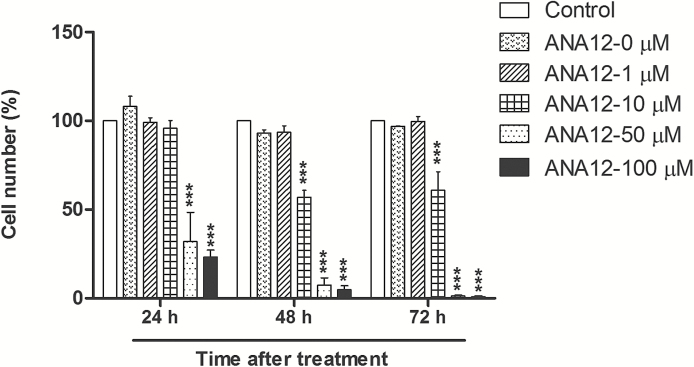Fig. 1.
Selective tyrosine receptor kinase B (TrkB) inhibition reduces the viability of human glioma cells. A172 cells obtained from the American Type Culture Collection (Rockville, Maryland) were cultured in Dulbecco’s modified Eagle’s medium (DMEM) low glucose supplemented with 10 % (v/v) fetal bovine serum (FBS) and 1% (v/v) penicillin/streptomycin. Cells were incubated in a humidified atmosphere of 5 % CO2 at 37 °C, were seeded at a density of 5 x 103 cells/well in 96-well plates and allowed to grow for 24 hours. The medium was replaced for treatments with increasing concentrations of ANA-12 (1, 10, 50, or 100 µM). Control cells were exposed to vehicle (dimethylsulfoxide, [DMSO], 1.6 %) alone, and cells in the ANA-12 0 µM group were not exposed to either vehicle or drug as an additional control showing that the vehicle had no effect by itself. Cell viability was assessed by trypan blue cell counting 24, 48, and 72 hours after treatment. Data normalized to control cells are presented as means ± SEM and represent 2 independent experiments performed in quadruplicate; *** P < .001 compared with control cells exposed to vehicle alone (2-way ANOVA followed by Bonferroni’s post hoc tests). All experimental procedures were approved by the institutional research ethics committee (GPPG HCPA number 1406–22).

